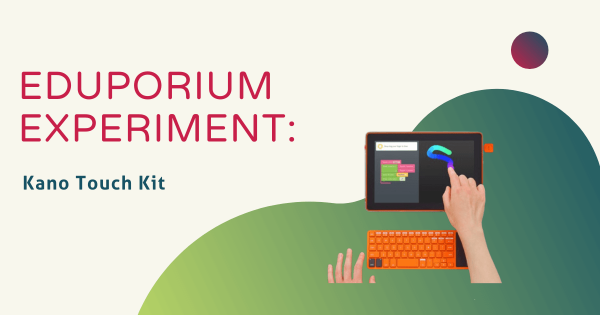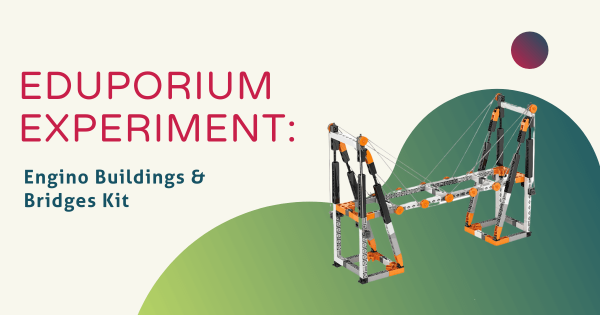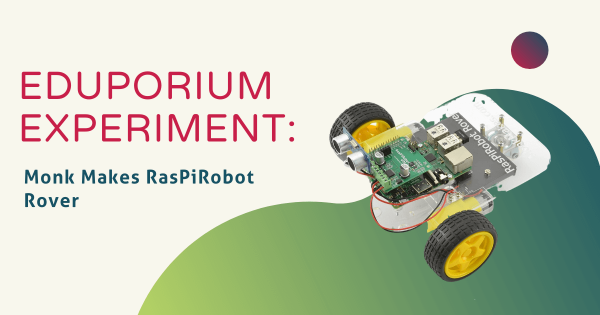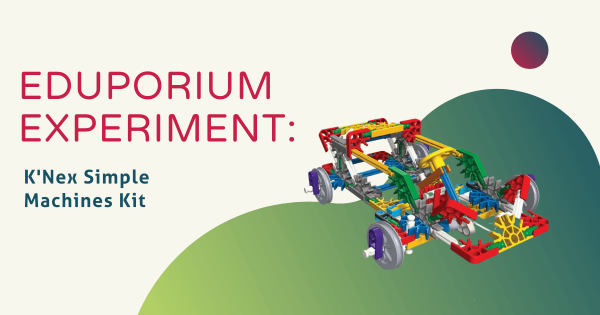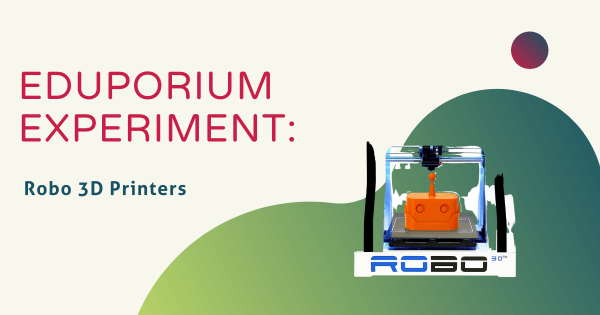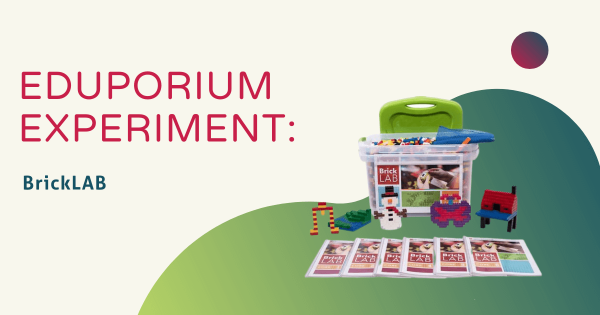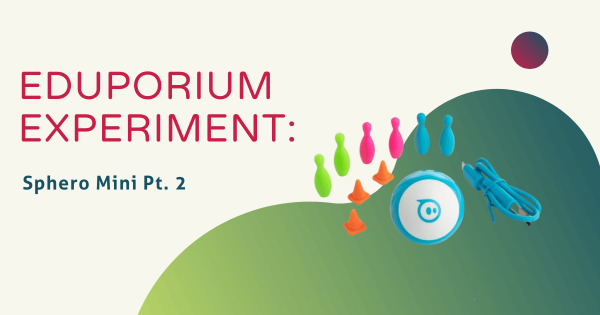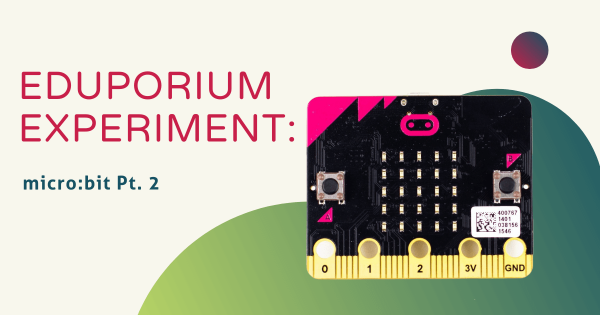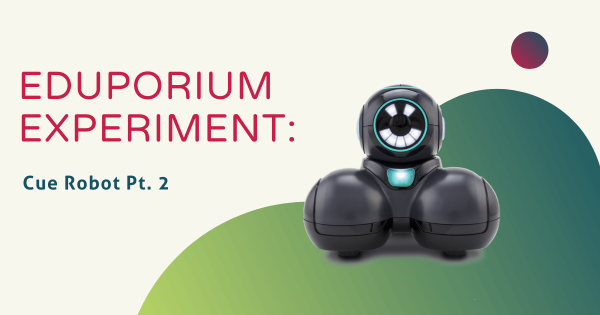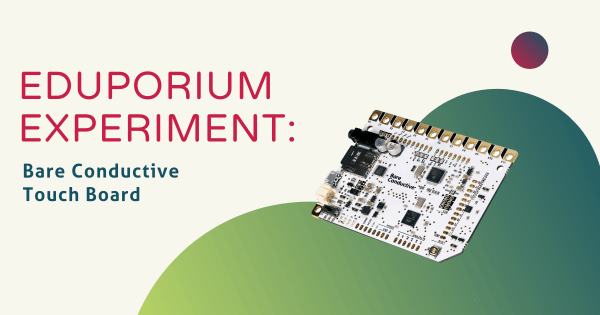There are two books kids can follow—one with instructions for building the computer and another that details all of the ways kids can then code with it. Well, now Kano has a few new models (as well as classroom packs), but for this edition of the Eduporium Experiment, we’re taking a look at the Kano Touch Kit and how kids
Eduporium Experiment
Our Eduporium Experiment series is one of our longest running blogs. Whenever we add new STEAM solutions to our store, we try it out so we can learn all about it. Over the years, we've covered dozens of top STEAM teaching tools, offering our first-hand insights and tidbits for educators. We believe this content gives K–12 teachers valuable information when it comes to using various STEAM solutions with their students. Our team analyzes products from different points of view and even considers implementation strategies in different educational environments. Whether it's most useful in the makerspace, library, or in the general classroom, we're happy to continue providing these helpful guides. You'll even find classroom-ready STEAM projects to try with your students. Browse through the posts or use the search bar on the left to find exactly what you're looking for.
In each 'experiment,' we provide key background information on the STEAM tool being featured. From there, we explore an actual project. This allows us to discover subtle tricks and hints that are extremely helpful for educators to know. Whether it's a coding tool, educational robotics solution, or even an engineering kit, we do our best to cover everything educators are investigating. As the Eduporium Experiment series has expanded, we've come a pretty long way. Now, you can find dozens of helpful articles that may include step-by-step project guides, troubleshooting suggestions, and even our thoughts on what makes each STEAM tool worthwhile for 21st century students. Find our insights on integrating STEM tools like the Bee–Bot, Finch 2.0, Ozobot Evo, micro:bit V2, and so many more!
-
Eduporium Experiment | Engino Buildings & Bridges Kit
For this week’s Eduporium Experiment, we opened up our Buildings & Bridges kit, which is part of Engino’s STEM STRUCTURES series. It’s a great way for students aged between 8-16 to not only build some pretty cool structures, but also learn the science behind engineering and the physics needed to ensure its safe and sound. -
Eduporium Experiment | The MonkMakes RasPiRobot Rover
If you’re looking to expand the use of your Raspberry Pi’s and even expose children to in-depth programming challenges, this MonkMakes RaspiRover Kit is a great way to combine computing, coding, and robotics. It’s an ideal kit for engaging ambitious children who are ready to take the next step and with further explore computer science principles with the Raspberry Pi. -
Eduporium Experiment | K'NEX Simple Machines Kit
Engineering is a key part of 21st century education, so introduce your students to wheels, axles, and inclined planes with the K’NEX Simple Machines Kit! Recommended for students aged eight and up and as part of a 1:3 kit-to-student ratio, this kit serves as a great hands-on introduction to engineering and creative thinking. -
Eduporium Experiment | Robo 3D Printers
Their printers provide some of the highest performance and include plenty of comprehensive classroom content to help both teachers and students get started and stick with the innovative opportunities 3D printing has to offer. Keep reading to learn how to integrate Robo 3D’s printers into a classroom or makerspace environment and even at home. -
Eduporium Experiment | BrickLAB
This week in the Eduporium Experiment, we’re delving into the popular engineering packs from PCS Edventures known as BrickLAB. Upon first glance, the components closely resemble LEGO bricks, but after doing some research and exploring, I found out that, while they may look like LEGOs, there is much more academic potential for BrickLAB. -
Eduporium Experiment | Sphero Mini Pt. 2
This week in the Eduporium Experiment, we’re diving into Part 2 of the Sphero Mini. In the first Sphero Mini blog, we addressed the differences between the Sphero SPRK+ and the Mini. This week, we are going to discuss the various apps that students can use with the Mini and how to apply them in a classroom, makerspace, or at -
Eduporium Experiment | micro:bit V1 Pt. 2
This week’s Eduporium Experiment is all about the basics of the incredibly popular and powerful micro:bit board. The micro:bit is essentially a mini, portable, programable computer that has a variety of uses in and out of the classroom. It can help students learn basic coding, engineering skills, and help spark their creativity. -
Eduporium Experiment | Cue Robot Pt. 2
With this charismatic robot and accompanying app, students can play games, chat, control, and program the Cue in Blockly or JavaScript. They can even pick one of four avatars to represent and track their progress: Charge, Zest, Smirk, and Pep! Each avatar is preprogrammed with unique personalities, expressions, and interactions. -
Eduporium Experiment | Bare Conductive Touch Board
This Fourth of July, we decided to experiment with Bare Conductive’s Touch Board to help spark an interest in circuitry among our readers. The Touch Board is a limitless interface at the heart of some of Bare Conductive’s most innovative STEAM tools. Using it, students can turn touch into sound with the help of conductive materials.




